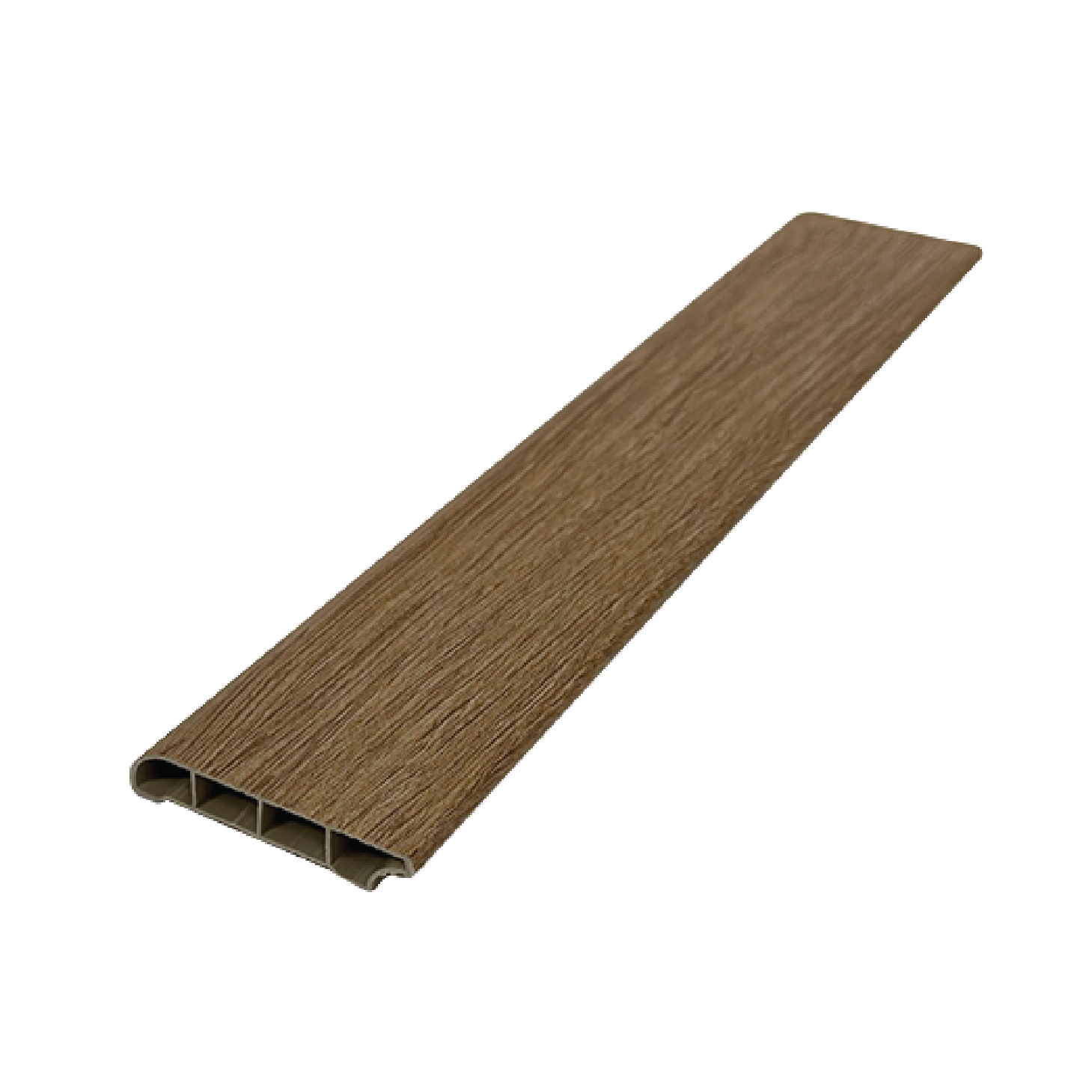SKIRTING
Vinyl flooring skirting serves both function and aesthetics, enhancing the overall appeal of a space. Acting as a finishing touch, it covers the joint between the wall and the floor, protecting against damage like scuffs and scratches. Additionally, it acts as a barrier, preventing dirt and moisture buildup. Beyond practical benefits, skirting contributes to a polished interior design, creating a seamless transition between the floor and walls for a professionally finished look.
AVAILABLE COLOURS
ROUNDED STAIRCASE CAPPING
The smooth, curved design of the curved staircase capping adds an elegant and graceful touch to any staircase, creating a visually appealing focal point in the space. Functionally, the rounded capping serves as a protective barrier for the edges of the stairs, preventing wear and tear while providing a comfortable and safe transition between steps. Additionally, the rounded profile eliminates sharp edges, reducing the risk of accidents and making it an ideal choice for households with children or elderly individuals.
AVAILABLE COLOURS
L-CAPPING
With one leg covering the edge of one floor and the other leg extending onto the adjacent surface, L capping is particularly effective when there is a height difference between the two surfaces.
AVAILABLE COLOURS
ALUMINIUM
T-CAPPING
The purpose of T capping, or T-shaped transition strips, is to facilitate a smooth and level transition between two similar-height flooring surfaces. The top part of the T-shaped strip covers the joint between the floors, ensuring a visually seamless connection. T capping is commonly utilized in areas where a uniform and level transition is required, providing an aesthetically pleasing solution for the meeting point of different flooring materials.
AVAILABLE COLOURS
ALUMINIUM
D-CAPPING
The function of D capping, or D-shaped transition strips, is to offer a gradual and protective transition between two surfaces with a height difference. The semi-circular or "D" shape of the transition strip allows one side to cover the edge of the higher surface, while the other side creates a gentle slope down to the adjacent lower surface.







































